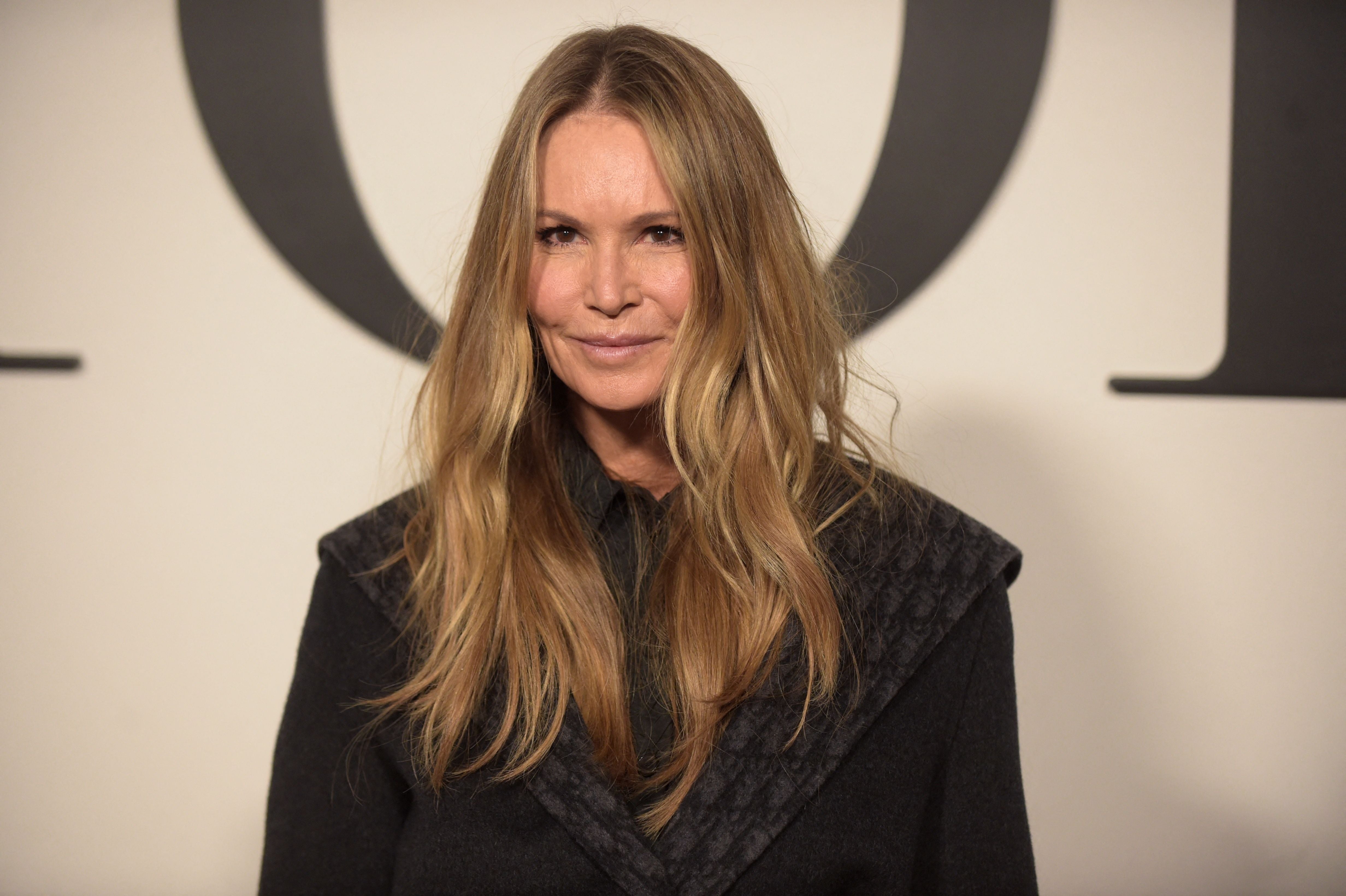Woman diagnosed with stage 4 cancer after symptoms dismissed as anxiety.”
“Teenager treated for ‘period pain’ told she has rugby ball-sized ovarian tumour.”
“Athletic woman given months to live after headaches dismissed as long Covid.”
These headlines – and any number of others like them – have all appeared over the past couple of months. Symptoms and misdiagnoses may differ, but they’re all variations on a theme: woman goes to doctor; woman’s health concerns are dismissed; woman turns out to have cancer.
In April, Olivia Williams spoke out about the same experience. The Sixth Sense actor revealed she would never be cancer-free after doctors wrote off her cancer symptoms “for years”. She visited the doctor approximately 21 times before finally being diagnosed with pancreatic cancer, by which time it had spread.
“If someone had f***ing well diagnosed me in the four years I’d been saying I was ill, when they told me I was menopausal or had irritable bowel syndrome or [was] crazy – I use that word advisedly because one doctor referred me for a psychiatric assessment – then one operation possibly could have cleared the whole thing and I could describe myself as cancer-free, which I cannot now ever be,” she said.
Misdiagnoses happen more frequently than you might think. A 2018 report found that four out of 10 people with cancer in the UK were misdiagnosed at least once before their disease was identified. The report, commissioned by the All.Can cancer initiative, called for investment in earlier testing and screening, and warned that one in five (21 per cent) UK patients surveyed said they had waited more than six months to get the correct diagnosis. Meanwhile, 76 per cent of primary bone cancer cases in the UK had initially been misdiagnosed, according to a 2020 patient survey.

A study published in the BMJ Quality & Safety Journal in 2022 identified the scale of misdiagnosis more generally, finding that a missed diagnosis opportunity (MDO) occurred in 4.3 per cent of GP consultations in England. Co-author of the paper, Professor David Reeves from the University of Manchester, said that, while “the occasional misdiagnosis is not surprising” given that GPs do a challenging and demanding job and often see patients with unclear symptoms and complex medical histories, any MDO could have “serious long-term consequences for the patient and be devastating for the clinician as well”. Dr Sudeh Cheraghi-Sohi, who led the study, added that several million patients are potentially at risk of avoidable harm from a misdiagnosis each year.
Multiple studies have shown that, regardless of illness, women are more at risk of having their concerns swept aside by medical professionals. One 2024 study published in Nature revealed that women in hospital wait longer to be seen and are less likely to receive pain medication than men. Another conducted by UCL in 2022 discovered that healthcare staff, both male and female, were more likely to discount women’s pain than men’s based on gender stereotypes that portrayed them as being “oversensitive” to pain, having a low pain threshold and exaggerating or expressing pain more easily.
One prime example of this phenomenon in action is Julie Coleman, 33, who spent a decade experiencing chronic back pain and shooting pain in her legs, only to be consistently fobbed off with painkillers and physiotherapy by her doctor. A large benign tumour in her spine was finally discovered and removed 10 years later, having already caused significant nerve damage; the experience caused her to lose all faith in her GP. “I was told it was sciatica caused by a slipped disc in my back,” she said. “They said there’s no point sending you for any scans because the back surgery is too dangerous. It was extremely frustrating and it got to the point where I probably lost trust in my GP because I knew they weren’t going to do anything.”
Coleman added: “I think we take our bodies for granted and if you feel something isn’t right, keep pushing for answers.”
If someone had f***ing well diagnosed me in the four years I’d been saying I was ill… one operation possibly could have cleared the whole thing
Olivia Williams
Depending on their age and type of cancer, women are also susceptible to having their symptoms misattributed to their menstrual cycle or the perimenopause. In one case shared by the charity Brain Tumour Research last year, a 45-year-old mum of three was told her migraines, extreme tiredness and brain fog were all signs of perimenopause – only to later discover that they were the result of a brain tumour.
A 2016 report released by the Brain Tumour Charity, meanwhile, detailed how women experienced longer delays with diagnosis – they were more likely than men to wait 10 months or more from their first visit to a doctor to a correct diagnosis, and to have made more than five visits to the doctor prior to diagnosis. In six out of 11 cancer types, women also experienced a longer wait between the onset of symptoms and diagnosis, according to a 2015 study.
Misdiagnosis is a particular worry with cancer patients because the later the disease is picked up, the higher the likelihood that it will spread and prove fatal. Cancer is typically attributed a “stage” from 1 to 4, with 1 having the “best” prognosis and 4 being the most advanced or serious. Early diagnosis and treatment significantly increase patient survival rates in most forms of cancer: for example, 65 per cent of people with lung cancer survive the disease for five years or more when diagnosed at stage 1 compared with only 5 per cent of those diagnosed at stage 4.
But misdiagnosis could also engender other troubling issues – such as eroding trust in doctors and the medical profession more widely. Experts have warned of a growing threat posed by cancer sufferers shunning science-backed treatments such as surgical intervention, medication, and chemo and radiotherapy in favour of “alternative” therapies. Often peddled by “wellness” influencers online, these snake oil-type remedies include coffee enemas and raw juice diets and are leading to needless deaths, say oncologists; the alarm was raised at the annual American Society of Clinical Oncology (Asco) conference in Chicago earlier this month, reports the Guardian.

Earlier this year, the Netflix show Apple Cider Vinegar dramatised a watershed scandal in the alternative cancer treatment sphere, telling the real-life story of how Australian wellness “guru” and Instagrammer Belle Gibson tricked the world into believing she had cured her (non-existent) brain tumour through a healthy diet in 2015.
But the situation hasn’t improved since then; cancer misinformation has “acutely worsened in the past decade”, according to a paper presented at the Asco conference. In response, Professor Stephen Powis, the national medical director of NHS England, called out the “alarmingly high level” of misinformation circulated on social media; Dr Richard Simcock, chief medical officer of Macmillan Cancer Support, said the issue was “very worrying” and had “exponentially increased the problem” of patients turning to unproven quackery. The latter described two young women with cancer he’d seen – and, indeed, data shows that young women are the cohort most likely to seek out alternative cancer therapies – who had rejected evidence-based medical intervention and were instead “pursuing unproven and radical diets promoted on social media”.
It doesn’t help when influential people in the public eye are also touting potential harmful therapies. Model Elle Macpherson, for example, announced to the world in September 2024 that, following an initial lumpectomy, she had gone against the advice of 32 doctors and experts in refusing a mastectomy with radiation, chemotherapy, hormone therapy and breast reconstruction to treat her breast cancer. She claimed to have instead relied on an “intuitive, heart-led holistic approach”, adding: “In traditional terms, they’d say I’m in clinical remission, but I would say I’m in utter wellness. And I am!”
But it’s not just an issue of misinformation, but one of suspicion of conventional routes: “It’s clear that we have work to do to build back trust in evidence-based medicine,” said Simcock. In fact, the study presented in Chicago found that one in 20 people surveyed had no trust in scientists to provide cancer information. “We’re losing the battle for communication,” said Dr Fumiko Chino, a cancer researcher and assistant professor at MD Anderson Cancer Centre in Texas, who co-authored the paper. “We need to regain that battlefield.”
It’s clear that we have work to do to build back trust in evidence-based medicine
Dr Richard Simcock, Macmillan Cancer Support
Dr Julie Gralow, Asco’s chief medical officer, also mentioned several patients who had opted for “all-natural” approaches, paying for clinics in Mexico where treatments ranged from caffeine colonics to vitamin C infusions. “A few times, they didn’t come back,” she said, “And then I would learn within nine months they tragically had died.” One large-scale analysis of cancer treatments and patient outcomes conducted in 2017 found that patients who opt for alternative therapies and decline conventional treatments are 2.5 times more likely to die within five years of being diagnosed.
It’s particularly pertinent that young women are the most susceptible to embracing unproven therapies, given that cancer rates are on the rise in this demographic. A 2025 American Cancer Society study discovered that young women are now nearly twice as likely to get cancer as young men in the US; the findings show that cancer rates in women under the age of 50 are now 82 per cent higher than their male counterparts. “We see for the first time, if you’re a woman under the age of 65, you’re now more likely to develop cancer than men in that same age group,” Dr William Dahut, chief scientific officer for the American Cancer Society, told CNN. The reason for the discrepancy is multi-faceted; rates in men declined at the turn of the century, while they’re rising in women, particularly breast and thyroid cancer.
Specific types of cancer are on the rise in young people, too; bowel cancer, for example, is increasingly being diagnosed in younger people across the world. Early-onset bowel cancer rates in adults aged 25-49 were on the up in 27 of 50 countries analysed in a recent study by the American Cancer Society published in The Lancet Oncology – and incidences in Scotland and England are increasing faster in young women than they are in young men. Doctors are also reporting a troubling increase in appendix cancer rates among millennials and Gen X.

It’s not all bad news though. For one, there have been concerted efforts to screen earlier for certain kinds of cancer in recent years. For example, at the beginning of 2025, it was announced that all 50 to 74-year-olds in England would start receiving a home-testing kit for bowel cancer every two years, extending the previous age range (54-74) by four years. In February, Cranfield University announced that a new low-cost, fast-response sensor to detect lung cancer biomarkers had been developed, paving the way for screening devices to spot the disease before symptoms occur. And a few weeks ago, the results of a world-first trial advanced the possibility that millions of women in their thirties could be offered breast cancer checks on the NHS after the study identified that about one in five of those aged between 30 and 39 years old are at increased risk of developing the disease. Women are currently only eligible for breast screening from the age of 50.
The screening process for cervical cancer has even improved in accuracy enough that eligible 25 to 49-year-olds will be invited every five instead of every three years if a smear test shows that they don’t have HPV.
These are all positive steps in the right direction. But with both cancer rates and rampant misinformation on the rise, building back trust in the medical establishment could just be a matter of life and death.
#women #cancer #symptoms #dismissed #turn #toxic #wellness



